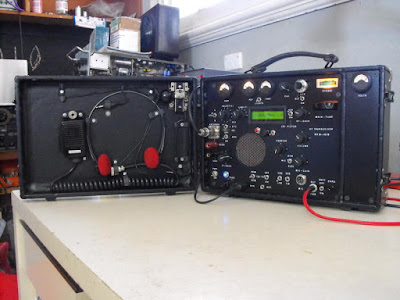There seems to be a bit of hysteria on the alleged phase noise problems of the Si5351 chip. The library yields some words of wisdom that help keep things in perspective:
ARRL Handbook (2002) page 14.5: "You would be excused for thinking that phase noise is a recent discovery, but all oscillators have always produced it."
Experimental Methods in RF Design page 4.12 "At first glance, phase noise sounds like a esoteric detail that probably has little impact on practical communications. This is generally true." (EMRFD does, however, go on to discuss the problems that arise on both receive and transmit from EXCESSIVE phase noise.)
Our old (young!) friend Thomas LA3PNA e-mailed on this subject noting that the Si5351 chip produces less phase noise than many Hartley or Collpits oscillator designs. He provides a link to measurements (far better than mine!) of the noise from the Si5351:
http://nt7s.com/2014/11/si5351a-investigations-part-7/
NT7S puts it this way:
I believe that the plots speak for themselves fairly well. If you compare these results to the receivers in the Sherwood Engineering receiver table, I think you'll see that the Si5351 acquits itself quite nicely for such an inexpensive part. Personally, I think the Si5351 is eminently usable for many receiver applications, except perhaps the most high-performance. Certainly for the price, it's going to be extremely hard to beat. I hope this motivates those sitting on the fence to decide if the Si5351 will meet their needs.
Be careful in evaluating statements saying that the Si5351 phase noise is 3-6 db worse than an Si570. This makes it sound like there is a LOT of noise coming out! But again, it is important to keep things in perspective: The noise from one chip might be -156 dbc/Hz while the "worse" chip might be -150 dbc/Hz. That's still not enough noise to make a lot of noise about.
The ARRL handbook recommended a very simple check for excessive phase noise: Set up a very strong signal in the band of your receiver. Then slowly tune to the signal, listening carefully for any build-up in noise as you approach the signal. I did this, and I didn't hear any. As for transmit, well, as Pete points out, I think the spectrum police on 40 meters would let us know if our signals were broad or noisy! The ARRL Handbook notes that in a transmitter, "This radiated noise exists in the same proportion to the transmitter power as the phase noise is to the oscillator power..."
Our book: "SolderSmoke -- Global Adventures in Wireless Electronics"
http://soldersmoke.com/book.htm
Our coffee mugs, T-Shirts, bumper stickers: http://www.cafepress.com/SolderSmoke
Our Book Store: http://astore.amazon.com/contracross-20
April 29, 2024. The J310 Direct Conversion Receiver
-
Recently I was asked what is the Simplest Receiver? Hands down it is the
Direct Conversion Receiver! Today's post is to talk about that receiver
topology m...
32 minutes ago






































